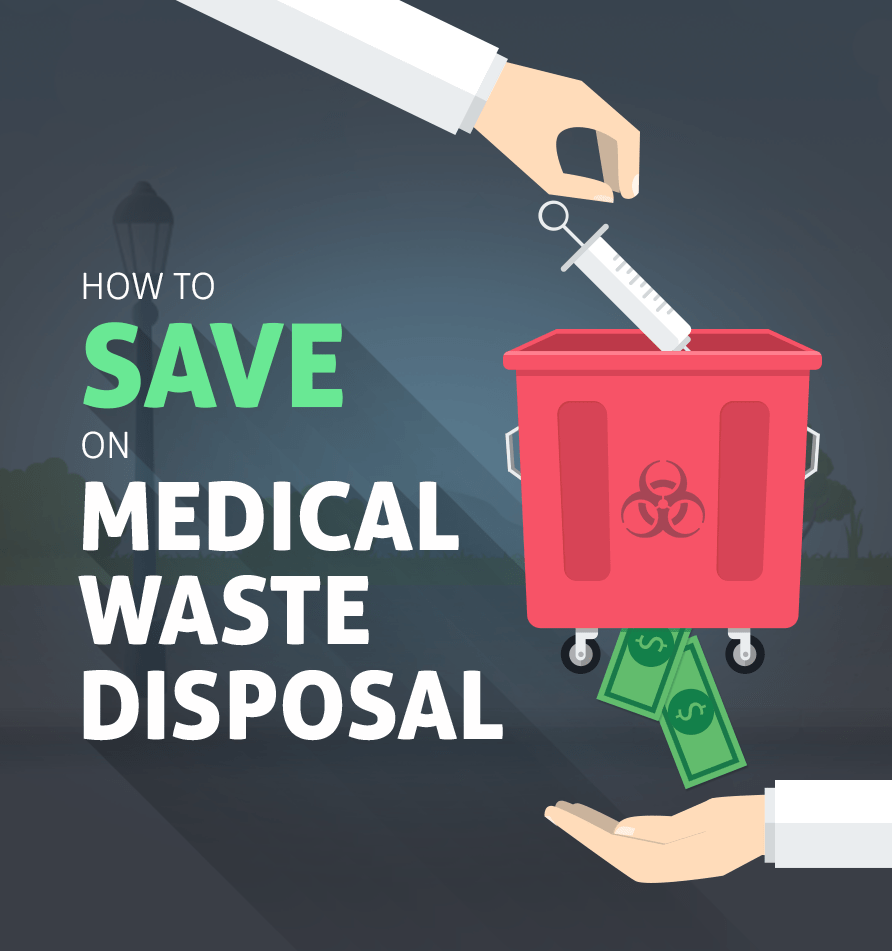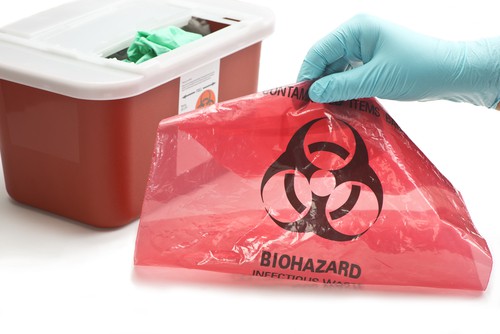Complete Medical Waste Removal Service: Seamless Disposal for Medical Care Facilities
Wiki Article
Finest Practices for Medical Waste Administration
Clinical waste management is an important facet of healthcare facilities' procedures to ensure the safety and security of clients, staff, and the atmosphere. Executing ideal practices in medical waste administration is necessary to minimize the risks connected with unsafe waste. This consists of proper segregation and categorization of waste, guaranteeing its risk-free storage and labeling, sticking to governing standards, and making use of efficient disposal methods. By following these best practices, healthcare facilities can minimize the possibility for infections, injuries, and contamination caused by improper handling and disposal of clinical waste. This intro aims to provide an overview of the significance of ideal techniques for medical waste monitoring and the subsequent areas will look into each practice carefully - medical waste disposal.
Partition and Classification
In the field of clinical waste monitoring, appropriate partition and categorization are essential methods for guaranteeing the efficient and safe disposal of healthcare-related products. Clinical waste is created from different resources, including healthcare facilities, facilities, laboratories, and other medical care facilities. It includes a large range of things, such as needles, syringes, bandages, gloves, and pharmaceutical waste.Partition involves the methodical splitting up of various types of medical waste based on their attributes and prospective risks. Sharps waste, such as blades and needles, ought to be placed in puncture-resistant containers to avoid injuries and the spread of infectious diseases.
Classification is the procedure of identifying medical waste into various groups based upon its prospective hazards. These groups might include infectious waste, contaminated materials, pharmaceutical waste, and general waste. By categorizing waste, health care centers can figure out the ideal disposal approaches and ensure compliance with local regulations and standards.
Proper partition and classification of medical waste not just shield the wellness and security of healthcare employees and the public but also contribute to the overall effectiveness and performance of waste management. It decreases the threat of mishaps, reduces environmental impacts, and advertises accountable garbage disposal practices.
Proper Storage and Identifying
To make sure the risk-free and efficient disposal of medical waste, medical care facilities should abide by proper storage and labeling methods. WasteX Medical Waste Disposal. Correct storage space and labeling play a crucial role in preserving the stability of clinical waste administration systems and safeguarding the health and wellness and safety and security of health care workers, people, and the publicWhen it concerns storage, it is important to have actually assigned locations particularly designed for various kinds of clinical waste. These locations need to be protected, well-ventilated, and outfitted with suitable containers that fulfill governing criteria (medical waste removal service). Partition and categorization of waste need to also be taken into factor to consider to prevent cross-contamination and prospective dangers

Routine surveillance and examination of storage locations and containers are necessary to recognize any type of concerns or violations. Personnel should be educated on correct storage and labeling practices, highlighting the significance of compliance with methods and laws.
Safe Transportation and Handling
Guaranteeing the appropriate and secure transportation and handling of medical waste is crucial for preserving the integrity of waste management systems and securing the health and security of all included. Medical waste, that includes items contaminated with contagious materials, pharmaceuticals, and other unsafe substances, need to be transported in a manner that stops leaks, spills, and prospective contamination.It is vital to make use of leak-proof and puncture-resistant containers that are specifically designed for medical waste. Additionally, waste must be segregated based on its nature and kind to avoid cross-contamination.
During transportation, it is very important to make sure that waste containers are securely secured and saved in a steady way. Vehicles utilized for carrying clinical waste ought to be furnished with proper safety and security features, such as spill control systems, to lessen the threat of any leaks or spills. Vehicle drivers ought to obtain training on proper handling and emergency situation action procedures to successfully deal with any unpredicted occurrences.
Furthermore, the transport and handling of medical waste ought to comply with all pertinent policies and guidelines established forth by regional, state, and federal authorities. WasteX Medical Waste Disposal. medical waste removal. Regular examinations and audits should be performed to analyze compliance and determine any kind of locations for enhancement
Compliance With Regulatory Standards
Maintaining compliance with regulative standards is necessary for efficient medical waste administration. These standards are placed in place to secure public health and the setting by ensuring that medical waste is correctly handled, treated, and disposed of. Compliance with governing standards assists to avoid the spread of contagious diseases, minimize possible hazards, and decrease the total impact of medical waste on the environment.To attain conformity, medical care centers should remain educated about the details guidelines regulating clinical waste administration in their territory. These guidelines may differ from country to nation, and even within different states or areas. It is very important for healthcare facilities to have a comprehensive understanding of these standards and to execute ideal methods and methods to make certain conformity.
One secret element of conformity is the appropriate partition and labeling of various kinds of clinical waste. This includes dividing sharps from various other waste, along with categorizing waste based on its possible threats. Healthcare facilities have to also guarantee that medical waste is saved in proper containers which these containers are properly identified and secured.
Additionally, conformity with governing guidelines calls for health care centers to develop correct training and education programs for team member associated with clinical waste administration. This consists of supplying training on waste segregation, handling, and disposal treatments, in addition to the correct use personal safety devices.
Normal monitoring and audits are likewise necessary to guarantee ongoing conformity with governing guidelines. This entails performing routine examinations of waste storage areas, recording waste administration procedures, and keeping records of garbage disposal.
Effective Disposal Techniques
Medical care centers should utilize effective disposal techniques for proper management of medical waste. Improper disposal of medical waste can present severe health and wellness and ecological dangers. There are several methods that can be used to properly throw away clinical waste, guaranteeing the safety and security of health care employees, people, and the general public.One commonly utilized approach is incineration. Burners can securely shed clinical waste at high temperatures, lowering the volume and ruining any potentially dangerous pathogens. Incineration can be pricey and may release harmful pollutants right into the air if not correctly controlled.
Another technique is autoclaving, which entails subjecting the waste to their website high-pressure vapor. This procedure eliminates bacteria, viruses, and other microorganisms, making the waste safe for disposal in regular waste streams. Autoclaving is a eco pleasant and reliable method, however it needs specific tools and qualified employees.
Chemical sanitation is also used in many cases, where liquid chemicals are put on the waste to sanitize it. This approach is less typically made use of because of issues regarding the effectiveness of chemical disinfection and the potential for chemical residues to infect the atmosphere.
In addition to these techniques, healthcare facilities must additionally carry out correct partition, product packaging, and labeling of medical waste to ensure its risk-free handling and disposal. Regular training and education and learning of personnel on appropriate waste management techniques are important to maintaining reliable disposal approaches.
Final Thought
In final thought, carrying out ideal methods for medical waste monitoring is necessary for making certain the security of health care employees, clients, and the setting. By correctly setting apart and classifying waste, saving and identifying it appropriately, guaranteeing risk-free transport and handling, adhering to regulative guidelines, and employing effective disposal approaches, healthcare centers can effectively handle and lessen the threats linked with medical waste. It is important for medical care organizations to stick and focus on to these best methods to maintain a safe and sustainable medical care atmosphere.Clinical waste administration is a crucial facet of medical care facilities' operations to guarantee the safety of patients, staff, and the setting. Carrying out finest practices in clinical waste administration is crucial to reduce the risks connected with dangerous waste. These groups might consist of contagious waste, hazardous waste, pharmaceutical waste, and general waste.In conclusion, implementing finest techniques for medical waste monitoring is essential for making certain the safety and security of healthcare workers, people, and the atmosphere. By appropriately setting apart and categorizing waste, keeping and classifying it appropriately, making sure safe transportation and handling, complying with governing standards, and utilizing effective disposal methods, medical care facilities can properly take care of and minimize the dangers associated with clinical waste.
Report this wiki page